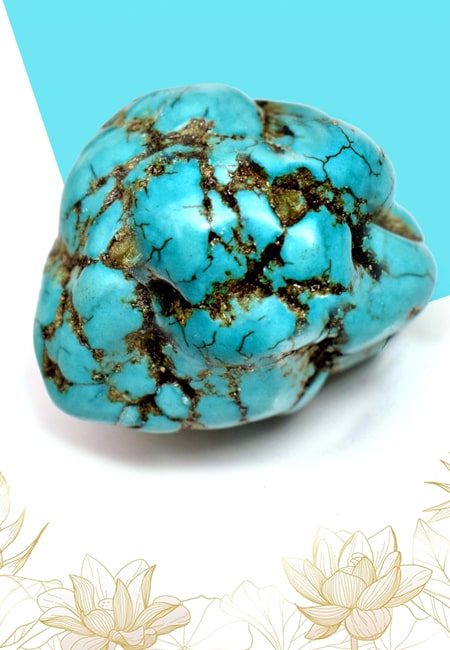- Written By Team DWS
- Festivals
- October 24, 2025
Martyrdom Day of Guru Tegh Bahadur: A Tribute to the Defender of Dharma
Introduction: Remembering the Guardian of Faith
In India’s history of moral strength and spiritual endurance, few figures shine as brightly as Guru Tegh Bahadur Ji, the ninth Guru of Sikhism. His life symbolizes the triumph of truth, compassion, and freedom of conscience. His ultimate sacrifice, known as Shaheedi Diwas (Martyrdom Day), is commemorated with deep reverence every year on November 24.
Guru Tegh Bahadur’s martyrdom was not merely an act of defiance but a defense of universal values — the right of every individual to practice their faith freely. His immortal words and selfless actions solidified his title as “Hind Di Chadar”, or “Shield of India,” honoring his unparalleled courage in protecting others’ spiritual rights.
638969082960671410.jpg)
Early Life of Guru Tegh Bahadur
Guru Tegh Bahadur was born on April 1, 1621, in Amritsar, Punjab, to Guru Hargobind Sahib Ji and Mata Nanaki Ji. Originally named Tyag Mal, meaning “Master of Renunciation,” he grew up surrounded by spiritual teachings, martial discipline, and moral devotion.
From early childhood, Tegh Bahadur showed extraordinary calmness and insight. At the tender age of 13, he displayed immense valor during a battle against the Mughals and was given the name Tegh Bahadur, meaning “Brave of the Sword.” Yet, it was not physical might but his spiritual serenity that defined his journey as a Guru.
He was a poet, philosopher, and mystic. His compositions, later included in the Guru Granth Sahib, reflect inner peace, detachment, and devotion to the Divine. Phrases in his hymns emphasize the need to conquer ego, overcome fear, and act with righteousness regardless of the cost.
________________________________________
The Times of Turmoil: Religious Oppression Under Mughal Rule
The period during Guru Tegh Bahadur’s life was fraught with turmoil. Emperor Aurangzeb, the Mughal ruler, initiated a campaign to impose Islam across his empire, often by force. Non-Muslims, particularly in northern India, were subjected to religious persecution. Temples were demolished, and the Kashmiri Pandits, known for their devotion and scholarship, faced a harrowing choice — conversion or death.
At this critical moment, the Kashmiri Pandits sought spiritual guidance from Guru Tegh Bahadur. Their plea deeply moved him. Realizing that silence would mean the extinction of freedom of faith, the Guru chose an extraordinary path — he decided to defend the oppressed, even at the cost of his own life.
________________________________________
The Ultimate Stand for Dharma
Guru Tegh Bahadur’s decision was guided not by political ambition but by moral conviction. He declared that if one man could stand against religious tyranny, it might awaken humanity to the cause of righteousness.
He knew the risks. Before leaving Anandpur Sahib, he appointed his young son, Guru Gobind Singh Ji, as the next Guru. The moment was solemn yet resolute. Guru Tegh Bahadur told his followers that this was not a fight of sword against sword, but of truth against injustice.
In 1675, Guru Tegh Bahadur, along with his devoted companions — Bhai Mati Das, Bhai Sati Das, and Bhai Dayal Das — traveled to Delhi, where Mughal forces captured them. They were imprisoned in Chandni Chowk, and subjected to immense torture to compel them to convert to Islam.
Despite unspeakable anguish and witnessing the brutal martyrdom of his disciples, Guru Tegh Bahadur remained unshaken. He epitomized the principle that spiritual strength triumphs over physical suffering.
On November 24, 1675, Guru Tegh Bahadur was publicly executed. Legend says his severed head was stealthily recovered by a brave follower, Bhai Jaita Ji, who carried it through the night to Anandpur Sahib. It was respectfully cremated by Guru Gobind Singh Ji, marking the beginning of an undying legacy of courage and freedom.
________________________________________
The Significance of His Sacrifice
Guru Tegh Bahadur’s martyrdom is perhaps the most profound proclamation of religious tolerance and human rights in world history. He did not sacrifice his life for his own people alone, but for the principle that every human being has the right to follow their chosen faith.
This makes his legacy transcend borders and religions. Whether one follows Sikhism, Hinduism, Islam, or any other path, Guru Tegh Bahadur’s sacrifice echoes as a universal message — that protecting the weak, defending truth, and upholding justice are duties beyond creed.
In many ways, Guru Tegh Bahadur became the embodiment of India’s pluralistic spirit — a beacon of unity amidst diversity. His stand laid the philosophical foundation for the Sikh ideal of service, bravery, and defense of dharma.
________________________________________
The Legacy Carried Forward by Guru Gobind Singh Ji
Guru Tegh Bahadur’s martyrdom profoundly impacted his young son, Guru Gobind Singh Ji, who was only nine years old at the time. The event shaped his vision of creating the Khalsa, a brotherhood dedicated to righteousness and the protection of humanity.
The Khalsa was the realization of his father’s values — bravery guided by morality, devotion anchored in discipline, and selflessness driven by belief in divine justice. Guru Gobind Singh’s later declaration, “When all other means have failed, it is righteous to draw the sword,” was not about violence but about defending justice when every peaceful path is closed — a lesson rooted in his father’s sacrifice.
________________________________________
Teachings of Guru Tegh Bahadur
Guru Tegh Bahadur’s writings, found in 115 hymns in the Guru Granth Sahib, offer a roadmap to spiritual awakening and ethical living. Some of his central teachings include:
- Fearlessness and Faith: True spiritual strength is freedom from fear and attachment.
- Equality of Humanity: No one is high or low; all souls are equal before God.
- Detachment and Contentment: Inner peace is attained not through possessions but through self-realization.
- Service and Compassion: Serve others selflessly; compassion is the core of righteousness.
- Moral Courage: Speak truth and defend justice even when standing alone.
His words guide not only the Sikh community but all who value peace, resilience, and integrity.
________________________________________
Observing Martyrdom Day: Rituals and Commemorations
Every year on November 24, Sikh communities across the world observe the Shaheedi Diwas of Guru Tegh Bahadur Ji with solemn devotion and gratitude. The day is marked by prayers, kirtans (devotional hymns), and narratives that recount his life and sacrifice.
At Gurdwara Sis Ganj Sahib in Delhi, built at the site of his martyrdom, and at Gurdwara Rakab Ganj Sahib, where his body was cremated, devotees gather in thousands. Langar (community meal) is served to all, signifying equality and collective service — the very principles Guru Tegh Bahadur championed.
Across India and abroad, schools, institutions, and Sikh missions organize seminars, exhibitions, and interfaith dialogues emphasizing the Guru’s message of humanity and peace.
________________________________________
The Modern Relevance of Guru Tegh Bahadur’s Message
In today’s world, where intolerance and division often shadow human relationships, Guru Tegh Bahadur’s teachings remain more relevant than ever. His courage teaches us to speak up for others, to safeguard freedom of expression, and to stand against injustice without hatred.
For youth, his life is a beacon of moral integrity. He reminds us that real leadership is not about domination but self-sacrifice. For communities, he is a symbol of coexistence. His message invites all people — regardless of culture or creed — to uphold dharma, not as religion, but as the universal law of righteousness.
Governments and peace organizations often invoke his legacy when discussing interfaith harmony and human rights advocacy. In essence, Guru Tegh Bahadur’s example bridges the spiritual and the civil, inspiring social reform based on compassion and mutual respect.
________________________________________
Inspirational Legacy Through Art and Culture
Over centuries, Guru Tegh Bahadur’s story has inspired countless poets, historians, and artists. From traditional Sikh ballads (vars) to modern commemorative plays, his life continues to resonate across creative expressions.
Recent years have seen documentaries, digital exhibitions, and cultural festivals celebrating his anniversary under themes such as “Freedom of Faith,” “Stalwart of Courage,” and “Martyr for Humanity.” His sacred sites in Delhi, Punjab, and Assam have become vital pilgrimage centers, blending history, worship, and national pride.
Educational institutions have also begun including lessons about his moral courage in curricula, ensuring future generations understand both his spiritual wisdom and his contributions to India’s cultural identity.
________________________________________
Stories of His Companions’ Devotion
Guru Tegh Bahadur’s companions — Bhai Mati Das, Bhai Sati Das, and Bhai Dayal Das — were embodiments of devotion and endurance. Each faced horrifying executions: sawn, burned, or boiled alive — yet none renounced their faith.
Their sacrifice amplifies the Guru’s spirit of steadfastness and faith under persecution. Together, they redefined what it meant to stand for truth — inspiring Sikh tradition to honor not just leaders but every soul devoted to righteousness.
________________________________________
Martyrdom and the Spirit of Universal Brotherhood
Guru Tegh Bahadur Ji’s martyrdom reminds us that defending the rights of others is not an act of charity, but responsibility. His stand was not for one religion’s survival but for humanity’s collective dignity.
In many ways, his life can be seen as a precursor to modern concepts of freedom of religion and human rights, principles now embedded in many constitutions and international accords. The message that everyone has the right to follow their conscience is timeless — and his sacrifice is the earliest recorded declaration of it.
638969083441782174.jpg)
Conclusion: The Eternal Defender of Dharma
As we observe the Martyrdom Day of Guru Tegh Bahadur Ji, we do more than recall a historical event — we connect with an eternal truth. His life teaches us that dharma is not confined to ritual; it is the courage to uphold truth, liberty, and compassion even when faced with tyranny.
Guru Tegh Bahadur’s martyrdom continues to inspire millions to live with integrity, empathy, and faith. His spirit remains alive — in every act of kindness, every stand for justice, and every soul who values freedom and humanity above fear.
“He who stands for righteousness, even when alone, illuminates the world.”
On this sacred day, let us remember the Defender of Dharma — the one who gave his life so that others could live in faith and peace.
Popular on Blogs

Black Tourmaline: Meaning, Healing Properties, Fascinating Facts, Powerful Attributes, Versatile Uses, and Beyond
September 05, 2023 / BY Team DWS
Black Tourmaline, also known as Schorl, is a highly revered crystal with incredible metaphysical properties. It derives its name from the Dutch word "turamali," meaning "stone with ..

Carnelian Stone: Meaning, Healing Properties, Power, Facts, Color, Uses and More
December 26, 2023 / BY Team DWS
Carnelian is a vibrant and captivating gemstone that holds a plethora of meanings, healing properties, and powers. Its warm and fiery energy makes it a popular choice among crystal ..

Citrine: Exploring its Meaning, Healing Properties, Fascinating Facts, Powers, Versatile Uses, and Much More
November 18, 2023 / BY Team DWS
Citrine, with its warm golden hues, has captured the attention and imagination of people for centuries. This beautiful gemstone, commonly associated with wealth and prosperity, hol ..

Black Onyx: Unveiling the Meaning, Healing Properties, Fascinating Facts, Powerful Attributes, Versatile Uses, and Beyond
July 25, 2023 / BY Team DWS
Black Onyx, a striking gemstone admired for its deep black hue and elegant appearance, has captivated people for centuries. In this comprehensive guide, we will delve into the mean ..

Unveiling the Mysteries of Turquoise Stone: Exploring its Meaning, Healing Properties, Power, Facts, Color, Uses, and More
December 05, 2023 / BY Team DWS
Turquoise, with its captivating blue-green hue, has been adorning jewelry and artifacts for centuries. This striking stone has a rich history, rich symbolism, and a plethora of int ..

The History Behind The Popularity of Red Agate
December 23, 2022 / BY Team DWS
An Agate is a type of magma rock that takes many years till it is washed out naturally into the water. And that is the reason this stone has elements of water. This beautiful stone ..

Bloodstone: Unveiling the Meaning, Healing Properties, Facts, Powers, Uses, and More
August 21, 2023 / BY Team DWS
Bloodstone, with its captivating deep green color with specks of red, is a mesmerizing gemstone that has fascinated civilizations for centuries. It possesses unique healing propert ..

Plan a Perfect Valentine's Week with Our Valentine Week List 2025
January 22, 2024 / BY Team DWS
Valentine's Day is undoubtedly the most romantic day of the year, but we believe that one day is just not enough to express your love and make your partner feel special. That's why ..


